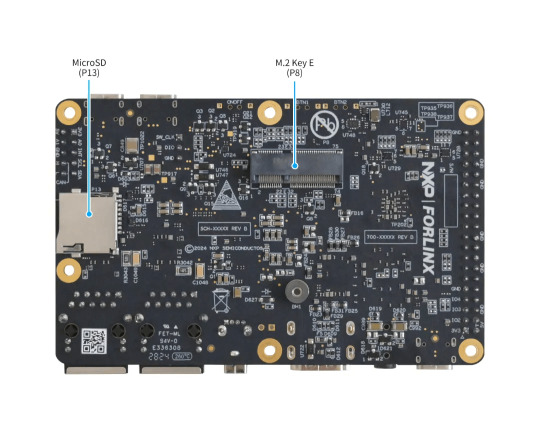#EmbeddedDev
Explore tagged Tumblr posts
Text
TLV320DAC3100 first bops 🔊🎶💃🕺
OK, after many hours spent with Claude on writing a driver for the TLV320DAC3100 (https://www.digikey.com/en/products/detail/texas-instruments/TLV320DAC3100IRHBR/2260591), we finally have it configured using our driver, and playing an MP3 stream on this ESP32. This I2S DAC has a particularly complex PLL and audio-routing system, so it's not one where you can just pipe in I2S data and have it magically play. One nice thing we got working on is the MCLK, which is generated from the BCLK, so it'll work great with anything from an Arduino-compatible to a single-board computer like Raspberry Pi. We're hoping to get the headphone detection working next so that we can turn off the amp when the headphone is plugged in. Also, it should be able to control the volume from the headset buttons. Also, we want to get the internal beep generator going so we can make tones separate from the audio stream for UI notifications.
#tlv320dac3100#dac#esp32#i2s#audioengineering#opensource#mp3streaming#embeddedhardware#hardwarehacking#arduino#raspberrypi#microcontrollers#firmware#coding#electronics#headphones#pll#audioprocessing#dsp#mclk#bclk#headphonemod#techinnovation#audiophile#sounddesign#makercommunity#opensourcehardware#iot#embeddeddev#beepgenerator
36 notes
·
View notes
Text
NXP Unveils FRDM i.MX 93 Development Board to Accelerate Modern Industrial and Edge Intelligence Advancements
Recently, NXP Semiconductors introduced the FRDM i.MX 93 development board, the first development board in the FRDM series based on MPU. It is designed with a focus on low cost and compactness, featuring the NXP i.MX 93 series application processor. It aims to provide users with an efficient and reliable solution for developing modern industrial control and edge intelligence applications.

One of the key highlights of the FRDM i.MX 93 development board is its onboard IW612 module, which utilizes NXP’s Tri-Radio solution, integrating Wi-Fi 6, Bluetooth 5.4, and 802.15.4 triple wireless communication technologies. It not only enhances the stability and speed of wireless communication but also provides developers with a wider range of connectivity options to meet the needs of various application scenarios.
In addition to its powerful wireless communication capabilities, the FRDM i.MX 93 development board is equipped with a rich set of hardware resources. HDMI display interface supports high-definition video output, greatly facilitating the development of multimedia applications. LPDDR4/LPDDR4X memory and eMMC storage ensure fast data processing and storage, further improving development efficiency. The board also features a power management integrated circuit (PMIC) and an EXPIO interface compatible with Raspberry Pi pin definitions, to meet the needs of developers in different application scenarios.


Moreover, the FRDM i.MX 93 development board supports GoPoint for i.MX Applications Processors. This feature helps developers quickly understand and apply the powerful functions of the i.MX processor through comprehensive demonstrations for various purposes, thereby accelerating product time-to-market. It serves as an ideal platform for beginners to learn and practice embedded development and is also a capable assistant for professional developers in prototyping and product development.
Click the link below to visit the NXP official website and learn more about the product information of the FRDM i.MX 93 development board.
0 notes
Text

🚨 BREAKING: Revolutionizing Tech! Embedded Systems Unleash a Wave of Innovation. Stay tuned for the future of seamless connectivity and smart devices.
read more: https://livewirecoimbatore.com/advanced-micro-controller/
reach Us: +91 8870275880
Start Learning Today
0 notes
Text

First of the Bones Rises – RP2350 Adalogger 🦴
With the RP2350 chip in wide distribution , we're now able to come up with a lot of variants of our popular RP2040 "Bones"
https://blog.adafruit.com/2023/01/22/rp2040-feather-bones-for-a-few-different-varieties/
that ended up becoming a dozen different boards.
We're starting with the 'Adalogger' design folks love: with a microSD card socket that is wired for SPI or SDIO. A separate regulator allows the I2C/uSD to be powered off completely for ultra-low power usage. This didn't make as much sense for the RP2040 because it was not a particularly low-power chip. There's also a Stemma QT port for plugging in external sensors.
What other "Bones" should we spin up?
#rp2350#adalogger#raspberrypi#microcontroller#lowpower#devboard#stemmaqt#makerlife#electronicsprojects#openhardware#embeddeddev#hardwarehacking#iotdevelopment#datalogger#microsd#sdio#spi#i2c#engineering#programming#linux#python#java#software engineering#coding#regulators#featherbones#techinnovation#diytech#circuitdesign
15 notes
·
View notes
Text
📢 Attention embedded developers! Learn how to boot the RK3562J on the M-Core.
The FET3562J-C SoM is great for industrial & consumer electronics.
Here's a step by step guide:
U-Boot: Usually no mod needed.
Kernel: Install SCons, add AMP device tree calls.
Config files: Copy & customize.
Compile: Get the amp.img.
Flash: Use the tool.
Validate: Check U-Boot printouts.
The M0 core has cool interfaces!

0 notes